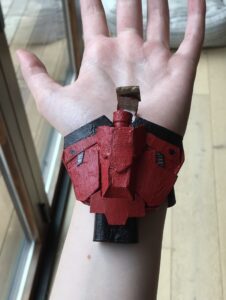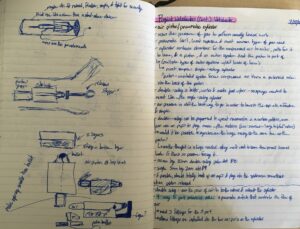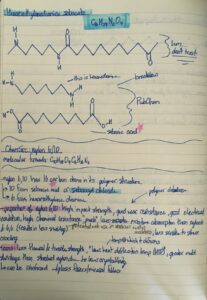My initial plan for this project was to design functional web-shooters, similar to the devices Spider-Man sports in the Marvel Universe (depending on the version).

I know this project sounds perhaps a bit juvenile, and admittedly it is slightly self-indulgent, but throughout it I have already learned so much about chemistry and engineering, it has truly been a great learning experience and the project isn’t even close to complete. Furthermore, artificial spider silk has such a promising future in a variety of fields. Think of the web-shooter more as a prototype or a window into a possible future where spider silk is able to actively help and add more to the world.
Due to my lack of resources in terms of welding web shooters, my project plan was modified and put into two parts: web-shooter and web fluid. There are numerous designs available online to follow for a simple and relatively harmless web-shooter.

I followed a YouTube video and built a web-shooter made of cardboard and an excessive amount of super glue. This web-shooter shoots a bullet made from a toothpick that has floss attached to mimic the appearance of spider web as it exits the cartridge. The project took roughly a week to make, working on it for an hour or two a day. However my pace was slightly hindered as I had to improvise for certain supplies.
The process of creating web-fluid was far more interesting to me. First, there was quite a bit of research that needed to be done. The obvious choice was artificial spider silk. However, artificial spider silk is unable to be replicated at home or by myself and the technology is still being explored by professionals due to the silk’s multifaceted uses and its high potential in many different fields, from engineering to medical.
Thus, I began to look into artificial silk. While artificial silk had far from the tensile strength that would be necessary to withstand Peter Parker swinging from it, artificial silk is a type of silk, like spider silk. It also has the potential to be stronger, the challenge is that artificial silk is formed from a very short chains of molecules, making it weak and easy to break. A longer chain promises higher tensile strength leading to a greater possibility of its effectiveness in the superhero/vigilante career.
Personally, the most interesting idea for what the web-fluid could be was nylon 6,10. Nylon 6,10 is a polymer created from the reaction between sebacoyl chloride and hexane diamine. There are a few reasons nylon 6,10 is the best contender and to keep it brief, here’s a short summary: high impact strength, good wear resistance, good electrical insulation, high chemical resistance, lower moisture absorption than nylon 6 or 6,6, and less sensitive to stress cracking.

I was able to successfully make a small sample of nylon 6,10 and I hope in the future to make a larger amount that should (hopefully) have a higher tensile strength than the first sample. With a web-fluid prototype chosen, it was time to move on to designing the actual shooting mechanism.
I had a few ideas, but they all centered around one main concern: creating air pressure. There needed to be enough pressure inside the web-shooter so that when used the web-fluid would launch out at a high speed. For now, I have settled on using a double-acting piston, but I am still very much in the designing stage. Attached are some very poorly drawn designs, but they should hopefully give a better visual to my thought process and the different ideas I am exploring.
I have a long way to go, but hopefully this is the beginning of my project.
